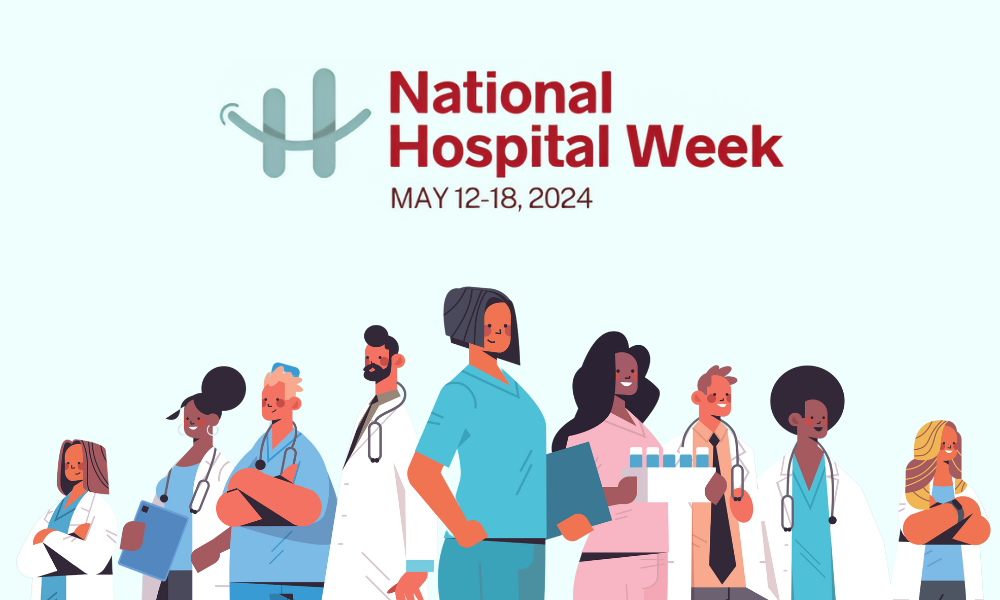Locums Digest is Locumpedia’s roundup of hot topics, top stories, and social media posts of interest to the locum tenens and medical communities. Subscribe to our newsletter to receive Locums Digest before it’s published here.
Struggling Rural Hospitals, Disrupted Family Practices Could Increase Locum Tenens Demand
Four months into 2020, “more than 90 percent of the nation’s rural counties [had] documented cases of COVID-19, with more than 70,000 confirmed cases and 3,000 deaths,” according to National Rural Health Association (NRHA) CEO Alan Morgan.
This follows a year (2019) when rural America experienced its highest level of hospital closures in the past decade, at 19, according to a study by the Chartis Center for Rural Health. The report highlighted the closure of 34 healthcare facilities over the past two years and 120 over the past decade–led by Texas (20), Tennessee (12), Oklahoma (7) and Georgia (7).
At the start of 2020, fewer than 2,000 rural hospitals (1,844) remained open to serve some 62 million rural Americans, according to data from the NRHA and Chartis. Almost a quarter of those are now vulnerable to closure.
Family Physician Shortage
Meanwhile, a USA Today writer predicted, “By June (2020), an estimated 60,000 family practices will close or significantly scale back, and 800,000 of their employees will be laid off, furloughed or have their hours reduced as they see a decline in business during the coronavirus pandemic.” The article was based on a report released April 1 by HealthLandscape and American Academy of Family Physicians (AAFP).
Physicians in family and internal medicine comprise roughly 26 percent of all physicians active in patient care across the United States, according to the 2018 Physician Specialty Data Report, the latest shared online by the Association of American Medical Colleges (AAMC). Largely because of the rapidly-aging US population, AAMC predicts a shortage of between 21,000 and 55,000 family physicians by 2032.
Regarding our aging population, AAMC highlights US Census data projecting 10-percent population growth by 2032, with the number of people over age 65 increasing by 48 percent. Also, a third of all currently active doctors will be older than age 65 in the next decade, so their retirement schedules could dramatically affect physician supply.
Locum Tenens Leverage
According to StaffCare’s “2020 Survey of Temporary Physician Staffing Trends,” primary care physicians (“PCPs,” or family or internal medicine doctors) remained the most in-demand locum tenens physicians for healthcare facilities in 2019, when 30 percent of responding healthcare facility managers reported using them at some time during the previous 12 months. Furthermore, the number of responding healthcare facilities seeking locum tenens physicians from all specialties (53 percent) more than doubled since 2016.
Considering the plight of rural hospitals, and that of many family practices following the COVID-19 shutdown, demand for locum tenens providers could increase rather dramatically by 2024. Perhaps the proverbial “perfect storm” for aligning rural healthcare demand with locum tenens supply could be brewing.
All News is Locums
Safeguarding Seasoned Physicians
In a blog post dated May 27, 2020, Cross Country Locums highlighted “sobering statistics” from the CDC and the Federation of State Medical Boards related to older physicians and COVID-19. These included:
- Almost a third (30 percent) of all active physicians are age 60 or older.
- While the highest percentage of severe coronavirus outcomes have been among people age 85 or older, those over age 65 comprise roughly 31 percent of COVID-19 cases; 45 percent of hospitalizations; 53 percent of ICU admissions and 80 percent of deaths.
- About a quarter of active physicians are age 65 or older, including 11 percent who are age 70 or older.
Among strategies Cross Country suggested considering to protect seasoned physicians from coronavirus:
- Utilizing them to offer telehealth services.
- Redeploying front-line veterans to support behind-the-scenes roles.
- Maintaining optimal flexibility by supplementing staff physicians with locum tenens providers.
“We believe locums providers will play a critical support role for providing transitional coverage during this period of uncertainty,” the company said.
Locum Tenens Finance: Schedule Flex, Tax-Filing a Bit More Complex
In the interest of transparency, Locum Connections recently addressed the tax implications of working locum tenens in a blog post dated May 21. “Your status as an independent contractor, coupled with the fact that you may work in several different states over the course of a year, adds to the complexities you will face come tax time,” the company said.
Noting that locum tenens providers sometimes need to file in more than one state, Locum Connections assured that, “When you fully understand the potential benefits and obligations associated with…locum tenens work, you can easily arrange the situation to your advantage.”
For those considering locum tenens work, here are some things Locum Connections wants you to know:
- The organizations with whom you contract “are not your employers, but rather your clients, and they will not pay any taxes on your behalf.” You will be responsible for paying expenses like “federal and state income tax, Social Security tax and other required fees out of your annual earnings when you file your income tax return each year.”
- You will also forego some benefits that many full-time employees receive, such as health insurance and access to a 401K. Thus, locum tenens contractors can demand higher compensation.
- Because locum tenens providers incur so many job-related, out-of-pocket costs, they enjoy deductions that can help reduce their tax burden. These might include health insurance, retirement plan contributions, travel expenses not reimbursed by clients or agencies, and continuing education expenses.
See More Patients. Bring In More Revenue
“Time is of the essence in recovering from the fallout of COVID-19. As your facility reopens service lines, utilizing locum tenens in high reimbursement specialties can offer a path to faster economic recovery,” CompHealth urges. The locum tenens company offers to “customize a hospital staffing plan that allows you to treat more patients,” featuring its “revenue estimator.”
In exchange for entering the physician specialty sought; the number of days required and the hospital’s collection percentage, the application offers a preview of potential revenue opportunities. “Locums physicians can fill gaps or be an extra set of hands bringing in revenue dollars to accelerate your financial recovery. With our help, you can:
- Bill Medicaid, Medicare, and private payers for the locums physician fees.
- Maximize hospital fees by increasing capacity and battling the care backlog.
- Speed private payer enrollment by leveraging our pre-filled paperwork.
“Knowing you can bill for locum tenens coverage is the first step in reclaiming more revenue. Understanding how to bill will help you put that knowledge into action.”
The Healthcare Staffing Story
Healthcare Workforce Rose by 312K Despite Ongoing Hospital Job Losses
The healthcare workforce started to rebound in May 2020, even though hospitals lost nearly 27,000 jobs in April, according to the Bureau of Labor Statistics (BLS).
“Healthcare gained 312,400 jobs between April and May 2020, largely driven by additions to the ambulatory care space,” the BLS said.
The employment data released late in the week of June 10 showed that, “from April to May, approximately 375,700 were added to the ambulatory care space, including physician offices, home health agencies, and medical and diagnostic laboratories.
“[But} A large portion of the healthcare workforce gains came from the dentist office reopenings. Dentist offices added 244,800 jobs during the one-month period, representing the largest increase in employment across all healthcare sectors.”
Fortunately, almost half (45 percent) of physician-office healthcare jobs lost in April came back in May 2020. “According to the latest job report, outpatient centers also added 10,800 jobs, while medical and diagnostic laboratories faced a modest increase of 400 jobs,” RevCycle Intelligence reporter Jacqueline LaPointe noted.
“Meanwhile, hospitals continued to suffer from job losses, with the sector experiencing a decrease of 26,700 positions in May 2020.
“Hospitals have been on the frontline of the COVID-19 crisis, but response efforts have put a strain on hospital finances. Financial losses tied to coronavirus-related expenses are slated to total $202.6 billion by the end of June, with hospitals losing an average of $50.7 billion a month, the American Hospital Association (AHA) recently estimated.”
How ‘bout This?
Medicus Healthcare Solutions’ June 10 blog post highlights a recent KevinMD.com article by Aseem Desai, MD, who suggests ‘taking compassion viral.’ In light of COVID-19 and its effect on our lives, Desai encourages compassion to improve our own happiness, to support others, to create hope for all. He channels the Dalai Lama, as follows:
“Compassion is not a religious business, it is a human business. It is not a luxury, it is essential for our own peace and mental stability. It is essential for human survival.”








